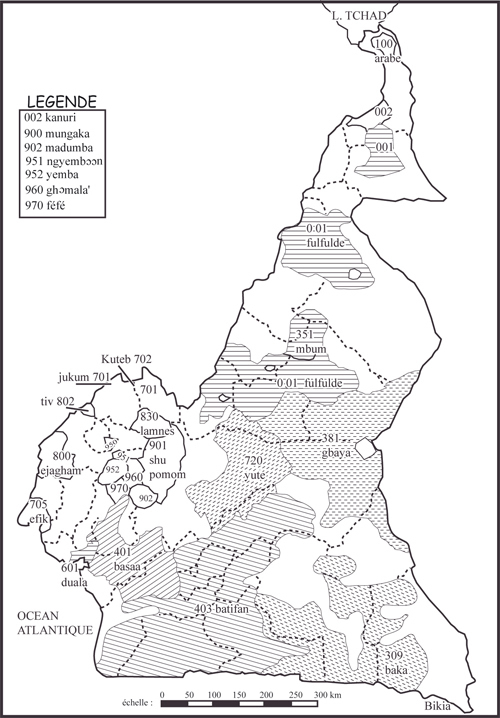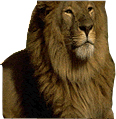The long south extension of Cameroon, coupled with its vast expanse of about 475 000 sq Km makes its diversity not to be limited only to its natural milieu. There is a great diversity of people and ethnic groups in Cameroon. This explains why there are a multitude of local languages. In 1964, over 206 ethnic groups were identified.
Towards the vast forest zone, on the western plateau and in the coastal region, live the pygmy and Bantou people. The pygmies are believed to be the oldest settlers in Cameroon. The north is characterized by the ‘Kirdis’ (meaning non-moslem) population as well as other descendants of the Sao civilization. From the north down south ends up in hills and plateaus at the foot of which live the Fulbe.
This diversity is marked by a variety of behaviors, activities, cultures and languages. This has however not influenced the sense of togetherness and peace in Cameroon. It is rather a political advantage in the sense that no group totally dominates the territory in terms of numbers.
Main racial groups
Oral history holds that Cameroonians originated from diverse geographical regions. The main groups identified are the: pygmies, Negritiques and Sudanese.
Some groups have over a long period conserved a high degree of homogeneity due to restricted marriages within their lineage or clan. This is the case with the Elog Mpoo of the Sanaga and lower valleys of the Nyong. In the Bameleke region, several royal lineages conserve their homogeneity by marrying only within this cast. And during the succession of a leader in most cases, there is insurance that the successor is a pure descendant from the same group. A good example is within the Bamun dynasty founded by Nchare in the XVII century. Most clans have over time adapted strategies that have for long preserved their lineage and limited intermarriages.
Some communities practice endogamy at a family level. This is the case with the Mkako who occupy the Kadei and Doume valleys in the East. Most small groups tended to marry amongst themselves or in close neighborhoods; marrying out of this context was just an issue of looking for a supplementary companion for those practicing polygamy.
These practices coupled with the fact that clans that have subsequently originated live in the same geographic locations, make the identification of people of the same group easy. Some people succeed in identifying people of different groups just by looking at their physical appearance that reveals some uniqueness in most cases. For example, there is a clear difference between a basaa/mpoo and a fulbe or pygmy.
The situation has greatly changed today; as early as the XVIII and XIX centuries several situations led to the mixing of races. It is the case with families who adopted children from other clans and others who owned slaves. Progressively, such people became assimilated into their new environments, making them to totally forget about their initial origins and hence adapted to their new environment. Even the Mpoo who were previously commended for their homogeneity carried out some of these practices and with time experienced a mixing of their lineage. They owned slaves (ntobene) and adopted people (bansosole) and some times had high regard for strangers whom they at times considered as people with spiritual powers.
Amongst the Vute of the today Mbam region experienced a mixing of their race some time in history due to their proximity to the Fulbes. The latter were renowned for their constant raids on neighboring communities and the Vute were an easy target. However, the zeal to remain strong and sovereign was a major motivation for the Vute who fought back, captured slaves and used some as soldiers in their wars. The strong and physically well built elements were easily integrated into the society , got married and brought forth children, meantime the others simply remained slaves all their lives and intermarried amongst themselves and brought forth children who were fully integrated and considered as being pure Vute. These phenomenons in the XIX are responsible for the heterogeneity of this group.
Ethnic groups that have maintained a high degree of homogeneity are the pygmies and the Mbororo. The pygmies hardly intermarry; in some cases though, they get married to other ethnic groups in the east. This is common amongst women who live their homes and a adopted into another clan. Their children are however absorbed into the other clan. The reverse situation hardly occurred; people hardly gave out their daughters to pygmy men. The situation is almost same for both sexes with the Mbororos; that of hardly intermarrying in other clans. They most often live in small societies on the Adamawa Plateau and parts of the Western plateau. Both clans are today marginalized and form one of the most uneducated groups in the country.
Due to an improvement in the transport system through out the country, people tend to migrate and settle in totally different locations from those of their origin. Such movements and settlement has led to intermixed marriages and the disappearance of some traits in several communities today. It is thus not easy to make a clear-cut boundary between ethnic groups in Cameroon.
Main Ethnic Groups in Cameroon
Linguistic family |
Sub-family |
Branch |
Division |
Group |
Sub-group |
Afro-Asian |
|
|
|
|
Choa-arabe |
-Sahel plateau |
|
|
Haousa, mafa, massa |
||
Nilo-Saharan |
-Saharan |
Central Sudan |
|
Bongo |
Kanouri |
Niger Kordofan |
|
North |
|
|
Fufulde |
Adamawa |
|
|
Toupouri, Mboum, bali chamba |
||
Oubangui |
|
West |
Gbaya, baka, yanguere |
||
Jukunoide Cross River |
|
Efik |
Mbenbe, issanguele |
||
Bantu |
Non-Bantu |
|
Tivoide, mambila, woute, tikar |
||
Bantu |
Ekoide Mamfe |
Ejagham, kenyang |
|||
-Western Grassfields |
Nso, aghem |
||||
-Lundu-mbo |
Bakossi |
||||
douala |
|||||
basaa |
|||||
bafia |
|||||
yambassa |
|||||
Ewondo, bulu |
|||||
maka |
|||||
kaka |
Linguistic Groups
Over 253 local languages are spoken in Cameroon. To the north of the Adamawa are the following broad groups of languages: Saharan, Adamawa and the West Atlantic languages. The people of the western plateau who speak semi-bantu languages are an indication of the link between the civilizations of the Bantu and the Sudanese.
It is proven historically that a group of Mbam immigrants who came to Cameroon created a prestigious dynasty in the 16th and 17th century. Towards the mid 19th century, Tchamba caravans coming from the Faro valley, crossed the Banyo region and attacked the western chieftaincies before finally settling in Bali and Ndop plain. The result of this historical event was that languages were now reduced to two groups: The western grass fields and the Mbam-Nkam groups.
Another large group of languages is that of the Gbaya and the Yangere who together form the Ubangi family. Towards the central part of Cameroon there are the Tumu or Tikar chieftaincies with their languages and the Vute and Mambila languages. It is however important to note that even within the same ethnic group, there are different dialects. This explains why in the regions of Bafia, the Mandara Mountains and on the Western Plateau, there are more than 70 linguistic communities living side by side. This is so because before the colonial penetration, these different groups traded with each other across the borders of their respective territories.
Besides these languages, it is important to know that there are several cross boundary languages that are spoken through out the National territory; hence facilitating interactions nation wide. The main ones are: Pidgin English and the two official languages; English and French. The two official languages are spoken in all the regions of Cameroon. French is dominant in eight regions meanwhile English is dominant only in two, South west and North West regions. Pidgin English goes above these two regions and is spoken in other Francophone areas like Douala, Nkongsamba, the Basaa country amongst others.
The Northern part of Cameroon is dominated by the Fulfulde language. It is widespread in this region. Its spread is as a result of the spread of Islam which comes along with it.
Although language groups are quite diverse in Cameroon, several efforts have been made to made to ensure national unity through the learning f these languages in schools even by people from other parts of the country.

Visit this link to download other maps showing languages spoken in Cameroon
>Languages spoken in North Cameroon
> Languages spoken in the Bamboutos region

